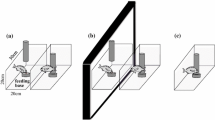Abstract
The self-feeding abilities of individually reared rainbow trout Oncorhynchus mykiss were investigated under four different light intensities (7×10−2, 1×10°, 5×101, and 7×102 lx). There was no significant effect of light intensity on self-feeder learning ability and food wastage (which did not exceed 0.5%). However, there was high individual variability in the ability irrespective of light intensity. The total number of trigger actuations was significantly higher at 1×10° lx than at 7×10−2 and 5×101 lx. Feeding patterns during the light phase of a day were classified as early or late in relation to the timing of significant peaks in fish feeding, or non-steady. The last pattern was defined when significant peaks were not observed. Under 7×10−2, 1×10°, or 7×102 lx, a non-steady feeding pattern was the most common. Early feeding appeared only under the 1×10° lx regime with the random pattern, while the late pattern was observed under 7×10−2, 5×101, and 7×102 lx. Under 5×101 lx regime half of the fish fed in the afternoon. These results suggest that light intensity can affect the timing of feeding judged from the frequency of pulling bite tags, but does not affect waste or learning period.
Similar content being viewed by others
References
Madrid JA, Boujard T, Sánchez-Vázquez FJ. Feeding rhythms. In: Houlihan D, Boujard T, Jobling M (eds). Food Intake in Fish. Blackwell Science, Oxford. 2001; 189–215.
Adron JW, Grant PT, Cowey CB. A system for the quantitative study of the learning capacity of rainbow trout and its application to the study of food preferences and behavior. J. Fish. Biol. 1973; 5: 625–636.
Boujard T, Leatherland JF. Demand-feeding behavior and diel pattern of feeding activity in Oncorhynch us mykiss held under different photoperiod regimes. J. Fish. Biol. 1992; 40: 535–544.
Landless PJ. Demand-feeding behavior of rainbow trout. Aquaculture 1976; 7: 11–25.
Sánchez-Vázquez FJ, Tabata M. Circadian rhythms of demand-feeding and locomotor activity in rainbow trout. J. Fish. Biol. 1998; 52: 255–267.
Marchand F, Magnan P, Boisclair D. Water temperature, light intensity and zooplankton density and the feeding activity of juvenile brook charr (Salvelinus fontinalis). Freshwater Biol. 2002; 47: 2153–2162.
Cobcroft JM, Pankhurst PM, Hart PR, Battaglene SC. The effects of light intensity and algae-induced turbidity on feeding behavior of larval striped trumpeter. J. Fish. Biol. 2001; 59: 1181–1197.
Fermin AC, Sernay GA. Effects of different illumination levels on zooplankton abundance, feeding periodicity, growth and survival of the Asian sea bass, Lates calcarifer (Bloch), fry in illuminated floating nursery cages. Aquaculture 1997; 157: 227–237.
Kestemont P, Baras E. Environmental factors and feed intake: mechanisms and interaction. In: Houlihan D, Boujard T, Jobling M (eds). Food Intake in Fish. Blackwell Science, Oxford. 2001; 131–188.
Puvanendran V, Brown JA. Foraging, growth and survival of Atlantic cod larvae reared in different light intensities and photoperiods. Aquaculture 2002; 214: 131–151.
Alanärä A, Brännäs E. Dominance in demand-feeding behavior in Arctic charr and rainbow trout: the effect of stocking density. J. Fish Biol. 1996; 48: 242–254.
Brännäs E, Alanärä A. Effect of reward level on individual variability in demand feeding activity and growth rate in arctic charr and rainbow trout. J. Fish. Biol. 1994; 45: 423–434.
Chen W-M, Naruse M, Tabata M. The effect of social interactions on circadian self-feeding rhythms in rainbow trout Oncorhynchus mykiss Walbaum. Physiol. Behav. 2002; 76: 281–287.
Noble C, Mizusawa K, Tabata M. Does light intensity affect self-feeding and food wastage in group-held rainbow trout and white-spotted charr? J. Fish. Biol. 2005; 66: 1387–1399.
Legendre L, Legendre P. Numerical Ecology. Elsevier, Amsterdam, 1983; 344–347.
Rocke DM. On the beta transformation family. Technometrics 1993; 35: 72–81.
Alanärä A, Brännäs E. Diurnal and nocturnal feeding activity in Arctic char (Salvelinus alpinus) and rainbow trout (Oncorhynchus mykiss). Can. J. Fish. Aquat. Sci. 1997; 54: 2894–2900.
Siegel S, Castellan JN Jr. Nonparametric Statistics for the Behavioral Sciences. McGraw-Hill, New York, NY. 1988; 213–214.
Alanärä A. The effect of temperature, dietary energy content and reward level on the demand feeding activity of rainbow trout (Oncorhynchus mykiss). Aquaculture 1994; 126: 349–359.
Chen W-M, Naruse M, Tabata M. Circadian rhythms and individual variability of self-feeding activity in groups of rainbow trout Oncorhynchus mykiss (Walbaum). Aquacult. Res. 2002; 33: 491–500.
Boujard T, Gelineau A, Corraze G. Time of a single daily meal influences growth performance in rainbow trout, Oncorhynchus mykiss (Walbaum). Aquacult. Res. 1995; 26: 341–349.
Fraser NHC, Metcalfe NB. The costs of becoming nocturnal: feeding efficiency in relation to light intensity in juvenile Atlantic salmon. Funct. Ecol. 1997; 11: 385–391.
Grove DJ, Loizides LG, Nott J. Satiation amount, frequency of feeding and gastric emptying rate in Salmo gairdneri. J. Fish. Biol. 1978; 12: 507–516.
Author information
Authors and Affiliations
Corresponding author
Rights and permissions
About this article
Cite this article
Mizusawa, K., Noble, C., Suzuki, K. et al. Effect of light intensity on self-feeding of rainbow trout Oncorhynchus mykiss reared individually. Fish Sci 73, 1001–1006 (2007). https://doi.org/10.1111/j.1444-2906.2007.01429.x
Received:
Accepted:
Issue Date:
DOI: https://doi.org/10.1111/j.1444-2906.2007.01429.x




